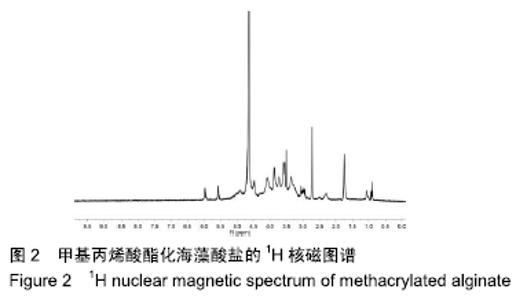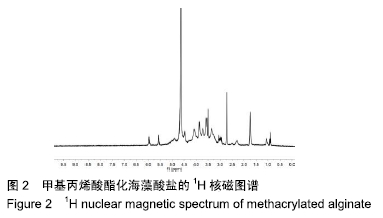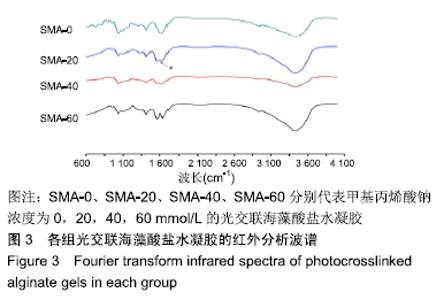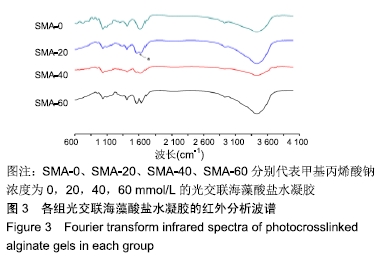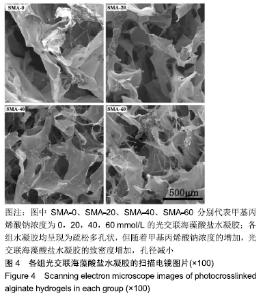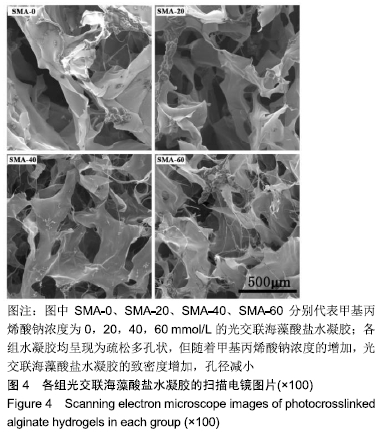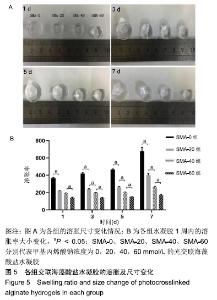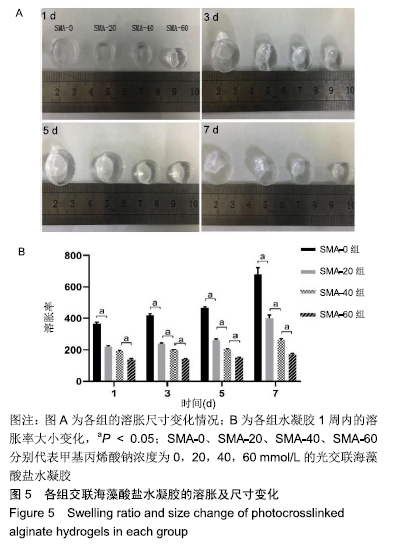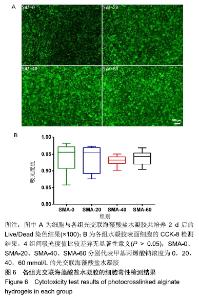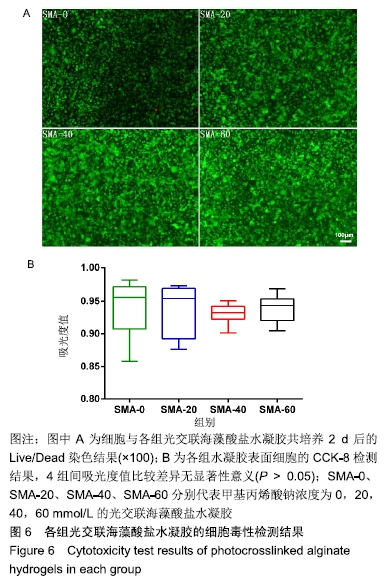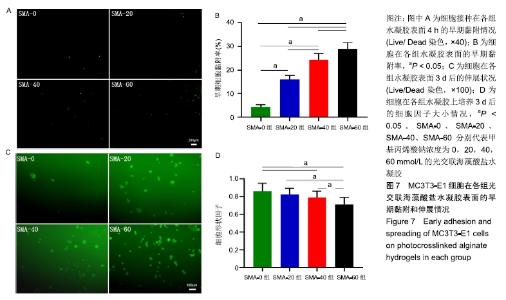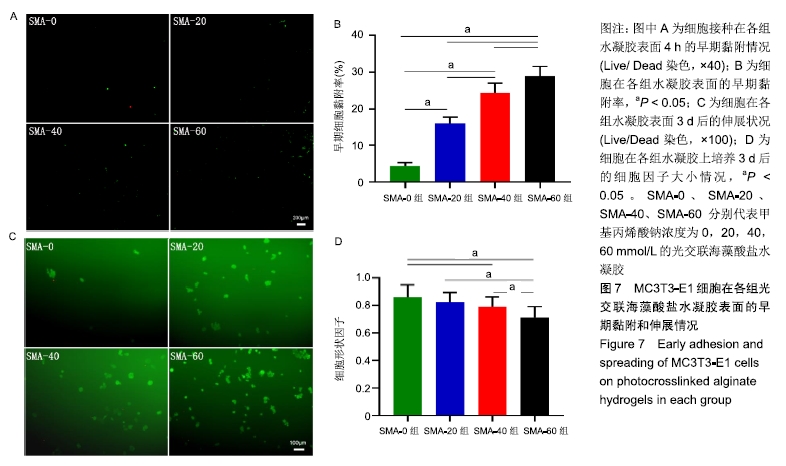[1] ROSETI L, PARISI V, PETRETTA M, et al. Scaffolds for Bone Tissue Engineering: State of the art and new perspectives.Mater Sci Eng C Mater Biol Appl.2017;78:1246-1262.
[2] SPECTOR M, LIM TC. Injectable biomaterials: a perspective on the next wave of injectable therapeutics. Biomed Mater.2016;11(1):014110.
[3] SANDVIG I, KARSTENSEN K, ROKSTAD AM, et al. RGD-peptide modified alginate by a chemoenzymatic strategy for tissue engineering applications.J Biomed Mater Res A.2015;103(3):896-906.
[4] ALI Z, ISLAM A, SHERRELL P, et al. Adjustable delivery of pro-angiogenic FGF-2 by collagen-alginate microspheres.Biol Open. 2018;7(3):bio.027060.
[5] CAMPBELL KT, HADLEY DJ, KUKIS DL, et al. Alginate hydrogels allow for bioactive and sustained release of VEGF-C and VEGF-D for lymphangiogenic therapeutic applications. PloS One. 2017;12(7): e0181484.
[6] COLUCCINO L, STAGNARO P, VASSALLI M, et al. Bioactive TGF-β1/HA alginate-based scaffolds for osteochondral tissue repair: design, realization and multilevel characterization.J Appl Biomater Funct Mater.2015;14(1):e42-52.
[7] GONZALEZ-FERNANDEZ T, TIERNEY EG, CUNNIFFE GM, et al. Gene Delivery of TGF-β3 and BMP2 in an MSC-Laden Alginate Hydrogel for Articular Cartilage and Endochondral Bone Tissue Engineering. Tissue Eng Part A.2016;22(9-10):776-787.
[8] IIJIMA K, TSUJI Y, KURIKI I, et al. Control of Cell Adhesion and Proliferation Utilizing Polysaccharide Composite Film Scaffolds. Colloids Surf B Biointerfaces.2017;160:228-237.
[9] 赵德路,铁朝荣,王新,等.复合锶离子光交联海藻酸盐水凝胶支架的机械和生物学性能[J].中国组织工程研究,2019,23(18):2880-2887.
[10] YIN M, XU F, DING H, et al. Incorporation of magnesium ions into photo‐crosslinked alginate hydrogel enhanced cell adhesion ability.J Tissue Eng Regen Med.2015;9(9):1088-1092.
[11] XU L P, MENG J, ZHANG S, et al. The Amplified Effect of Surface Charge on Cell Adhesion by Nanostructures.Nanoscale.2016;8(25):12540.
[12] HAO L, LI T, YANG F, et al. The correlation between osteopontin adsorption and cell adhesion to mixed self-assembled monolayers of varying charges and wettability.Biomater Sci.2017;5(4):800-807.
[13] TAN F, XU X, DENG T, et al. Fabrication of positively charged poly (ethylene glycol)-diacrylate hydrogel as a bone tissue engineering scaffold.Biomed Mater.2012;7(5):055009.
[14] TAN F, LIU J, LIU M, et al. Charge density is more important than charge polarity in enhancing osteoblast-like cell attachment on poly(ethylene glycol)-diacrylate hydrogel.Mater Sci Eng C Mater Biol Appl. 2017;76:330-339.
[15] 尹苗,徐飞,丁慧芬,等.正电荷修饰对光交联海藻酸盐水凝胶支架细胞粘附性能的影响[J].口腔医学研究,2014,30(3):205-208.
[16] QUERIDO W, ROSSI AL, FARINA M. The effects of strontium on bone mineral: A review on current knowledge and microanalytical approaches. Micron.2016;80:122-134.
[17] STEFFI C, SHI Z, KONG CH, et al. Modulation of Osteoclast Interactions with Orthopaedic Biomaterials.J Funct Biomater.2018;9(1): 18.
[18] WANG JL, MUKHERJEE S, NISBET DR, et al. In vitro evaluation of biodegradable magnesium alloys containing micro-alloying additions of strontium, with and without zinc.J Mater Chem B.2015; 3(45):8874-8883.
[19] AGARWAL R, GARCÍA AJ. Biomaterial strategies for engineering implants for enhanced osseointegration and bone repair.Adv Drug Deliv Rev.2015;94:53-62.
[20] GOLESTANEH AF, NADLER B. Modeling of cell adhesion and deformation mediated by receptor–ligand interactions.Biomech Model Mechanobiol.2016;15(2):371-387.
[21] MANCINI S, MÈGE RM, SARELS B, et al.A phenomenological model of cell-cell adhesion mediated by cadherins.J Math Biol. 2017;74(7): 1657-1678.
[22] MAKHATADZE GI. Linking computation and experiments to study the role of charge–charge interactions in protein folding and stability.Phys Biol.2017;14(1):013002.
[23] ZHOU HX, PANG X. Electrostatic Interactions in Protein Structure, Folding, Binding, and Condensation.Chem Rev.2018;118(4):1691-1741.
[24] WU W, WANG J, LIN Z, et al. Tumor-Acidity Activated Surface Charge-Conversion of Polymeric Nanocarriers for Enhanced Cell Adhesion and Targeted Drug Release.Macromol Rapid Commun.2014; 35(19):1679-1684.
[25] AUDREY B, CHRISTOPHE B, JEAN-MARC G, et al. Probing the influence of cell surface polysaccharides on nanodendrimer binding to Gram-negative and Gram-positive bacteria using single-nanoparticle force spectroscopy.Nanoscale.2018;10(26):12743-12753.
[26] SVETLIČIĆ V, IVOŠEVIĆ N, KOVAČ S, et al. Charge displacement by adhesion and spreading of a cell.Bioelectrochemistry. 2001;53(1): 79-86.
[27] GUO S, ZHU X, LI M, et al. Parallel Control over Surface Charge and Wettability Using Polyelectrolyte Architecture: Effect on Protein Adsorption and Cell Adhesion.ACS Appl Mater Interfaces. 2016;8(44): 30552-30563.
[28] KULKARNI M, MAZARE A, PARK J, et al. Protein interactions with layers of TiO2 nanotube and nanopore arrays: Morphology and surface charge influence.Acta biomater.2016;45:357-366.
[29] KUMARI S, TAGINIK G, VARADARAJ S, et al. Positively charged amino acid residues in the extracellular loops A and C of lens aquaporin 0 interact with the negative charges in the plasma membrane to facilitate cell-to-cell adhesion.Exp Eye Res.2019;185: 107682.
[30] PERNODET N, RAFAILOVICH M, SOKOLOV J, et al. Fibronectin fibrillogenesis on sulfonated polystyrene surfaces.J Biomed Mater Res A.2003;64(4):684-692.
[31] NELEA V, KAARTINEN MT. Periodic beaded-filament assembly of fibronectin on negatively charged surface.J Struct Biol.2010;170(1):50-59.
[32] ZHU X, GUO S, HE T, et al. Engineered, robust polyelectrolyte multilayers by precise control of surface potential for designer protein, cell and bacteria adsorption.Langmuir.2016;32(5):1338-1346.
[33] HE D, ARISAKA Y, MASUDA K, et al. A photoresponsive soft interface reversibly controls wettability and cell adhesion by conformational changes in a spiropyran-conjugated amphiphilic block copolymer.Acta Biomater.2017;51:101-111.
[34] ANDERSON CR, GAMBINOSSI F, DILILLO KM, et al. Tuning Reversible Cell Adhesion to Methacrylate-Based Thermoresponsive Polymers: Effects of Composition on Substrate Hydrophobicity and Cellular Responses.J Biomed Mater Res Part A.2017;105(9):2416-2428.
[35] GUO S, ZHU X, LOH XJ. Controlling cell adhesion using layer-by-layer approaches for biomedical applications. Mater Sci Eng C.2017;70(Pt 2): 1163-1175.
|
